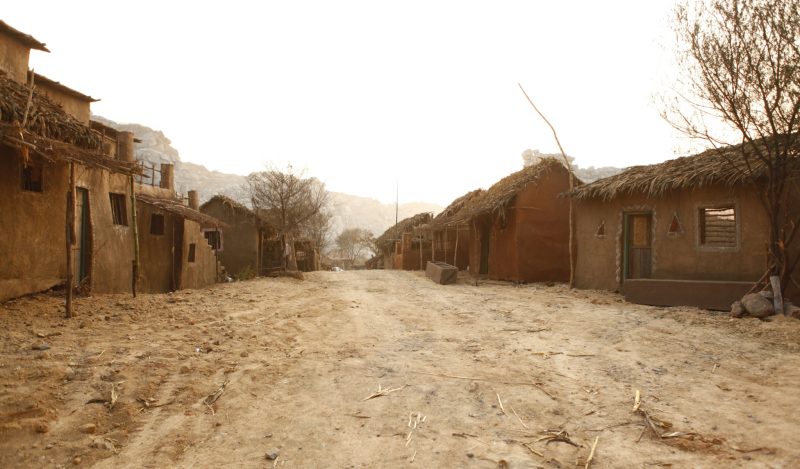In a recent study published in The Lancet Infectious Diseases, Watson et al. apply mathematical modeling to estimate that mass COVID-19 vaccinations saved between 14-20 million lives worldwide during the first year of the COVID-19 vaccination program. Previous Brownstone articles by Horst and Raman have already pointed out several erroneous assumptions in the study regarding infection- vs. vaccine-derived immunity duration as well as the fact it did not account for vaccine adverse events and all-cause mortality risk.
Here, I summarize the mechanics of how the authors arrived at their estimates of deaths averted due to mass vaccinations. I then elaborate on how flawed assumptions in the model can lead to grossly inflated estimates of averted deaths, which may explain the study’s lack of face validity and internal consistency.
The study uses a generative model of COVID-19 transmission, infection, and mortality dynamics that includes 20-25 assumed parameters based on select literature (i.e. vaccine effectiveness against transmission, infection, and death, age-mixtures of each country, age-stratified infection fatality rates etc.) that is fitted to reported excess deaths in order to infer (but not validate) virus transmissibility across time in 185 countries.
The study compares actual 2021 excess deaths to simulations (counterfactuals) that are supposed to predict the trajectory of excess deaths in each country if no vaccines had been introduced (i.e. by running multiple simulations of the above fitted models after removing the effects of vaccines). The difference between these counterfactual curves and actual excess deaths result in the estimated deaths averted due to vaccination.
The authors’ models do not appear to account for evolution of the infectivity or lethality of the virus, other than explicitly modeling an increase in infection hospitalization rates due to the Delta variant (see 1.2.3 Variants of Concern section in the Supplement). The primary assumption in the counterfactual simulations is that excess deaths are explained by the “natural” evolution of the virus as reflected in its time-varying transmissibility, which can only be inferred (fitted) and not validated.
If the models assume parameters that over- or misestimate vaccine effectiveness against transmission, infection and death as well as the duration of vaccine protection, while ignoring other sources of pandemic-related excess deaths, this will lead to an over- or misestimation of time-varying virus transmissibility in order to achieve a good fit with the excess death curves in each country. This in turn, would artificially inflate the estimated excess deaths when the effects of vaccination are subsequently removed from the counterfactual simulations. We elaborate on these points below.
The models in Watson et al. rely on unrealistic assumptions about vaccine-derived immunity
It is not clear whether the authors consider waning vaccine effectiveness in their models, and it appears that all their models assumed constant vaccine protection across the entire 1-year study period, even though studies have suggested it is somewhere between 3 to 6 months. The model they cite, Hogan et al. 2021 by default assumes “long-term” (i.e. >1 year) vaccine protection (see Table 1. in Hogan et al. 2021).
In addition, virtually every study of vaccine efficacy or effectiveness either excludes or lumps symptomatic cases within 21 days of 1st dose or within 14 days of second dose with the “unvaccinated” comparator groups. This is problematic in light of evidence that COVID infectivity may increase almost 3-fold during the first week post-injection (see Figure 1 in our commentary of the study). This suggests that reported vaccine effectiveness estimates that are based on lower case rates observed >6 weeks post-injection may (at least partially) be accounted for by infection-, not vaccine-, induced immunity due to short-term increases in COVID-19 infectivity immediately following vaccination.
While the models in Watson et al. include a latency period between vaccination and when protection kicks in, they do not account for a potential increase in vaccine-induced infectivity and transmissibility during this period. Not accounting for this effect in the models would overestimate naturally evolving and time-varying virus transmissibility and thus inflate excess deaths in the counterfactual simulations that exclude vaccination effects.
Finally, the authors explored the impact of immune evasion from infection-derived immunity by conducting a sensitivity analysis to estimate the deaths averted by vaccinations with different immune escape percentages ranging from 0% to 80% (see Supplementary Figure 4 in the original article). In these models, the authors make clear that they assume a constant (non-waning) vaccine protection which is an unrealistic assumption (see above paragraph). However, the authors do not appear to do a similar sensitivity analysis of immune evasion from vaccine-derived immunity, which is important given the point raised in the above paragraph.
Models ignore excess deaths due to factors other than COVID-19
The fitted models and their counterfactuals assume that excess deaths in each country are explained solely by a naturally evolving COVID-19 virus and its (fitted model-inferred) time-varying transmissibility. The models do not attempt to account for excess deaths caused by other pandemic-related factors, for example the vaccines themselves as well as other nonpharmaceutical compulsory interventions. The CDC reports an overall vaccine-induced death risk of 0.0026% per dose based on the Vaccine Adverse Events Reporting System, or VAERS. VAERS is a passive reporting system and may only capture ~1% of all vaccine-related side effects.
More recent independent lines of evidence using VAERS and credible assumptions about underreporting factors and ecological regression of publicly available vaccination and all-cause mortality data suggest VAERS may only capture ~5% of all vaccine-induced deaths. In addition, the models do not account for excess deaths resulting from other factors such as lockdown-induced “deaths of despair.”
By ignoring other potential sources of pandemic-related excess deaths in their models, the fitted models will over- and/or misestimate the effects of natural, time-varying virus transmissibility in order to achieve a good model fit with reported excess deaths, which in turn would lead to inflated excess death counts in their counterfactual simulations.
Lack of face validity
According to the authors’ country level estimates 1.9 million deaths were averted in the US assuming a 61% vaccine coverage (see Supplementary Table 3 in original study). In the first year of the pandemic when no vaccines were available (2020), there were 351,039 US COVID deaths. The authors’ models thus suggest that 1.9M / 350k = ~5.5x as many COVID deaths in the US would have occurred in 2021 (vs. 2020) had no vaccines been introduced (see Figure 2 in our commentary of the study). This is highly implausible as there is very little reason to believe the virus would have naturally evolved to be that much more transmissible, infective and lethal.
The authors allude to higher transmissibility in 2021 due to the relaxing and/or lifting of public health measures and restrictions (lockdowns, travel restrictions, mask mandates etc.). However, the assumption that this could account for a >5-fold increase in COVID deaths in 2021 contradicts >400 studies that have concluded there were little to no public health benefits of these measures in reducing COVID outcomes.
Moreover, in 2021 (after vaccination was introduced), there were 474,890 US COVID deaths. This is about 35% higher than 2021, suggesting crude evidence that mass vaccinations worsened COVID outcomes overall, consistent with observations of increased infectivity before vaccine protection kicks in (see 1st point above) and concerns of enhanced severity of COVID-19 disease caused by the vaccines based on preclinical studies.
Conclusion
While generative models are often a useful tool to simulate scenarios that have not occurred, inaccurate assumptions about model parameters can easily lead to model misspecification. In the case of Watson et al. 2022, they can lead to counterfactual simulations that grossly inflate estimates of deaths averted due to mass vaccinations.
Because such complicated modeling can be overly sensitive to input parameters, prone to overfitting and gives outputs that are difficult, if not impossible to validate, it should not be used to inform public health policy and guidelines. Quantitative risk-benefit ratio analyses that use clinical trial or real-world data to compare risks of specific outcomes, such as all-cause mortality or myopericarditis following vaccination and coronavirus infection, are much more informative and useful in this regard.
Note: I have posted a version of this article that includes figures and bibliography to ResearchGate, and tweeted the commentary to the original authors of the study in hopes for a response and rebuttal. I have also submitted a shortened version of the article as a 250-word letter to The Lancet Infectious Diseases and I am awaiting their reply. The author thanks Hervé Seligmann for helpful comments and feedback on the article.
Published under a Creative Commons Attribution 4.0 International License
For reprints, please set the canonical link back to the original Brownstone Institute Article and Author.









